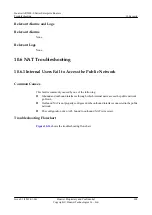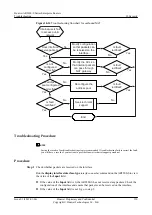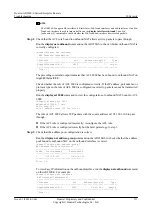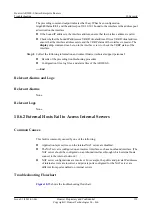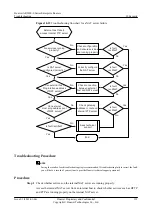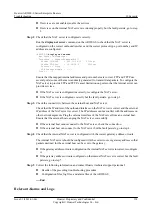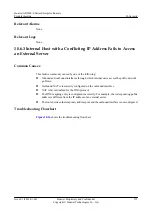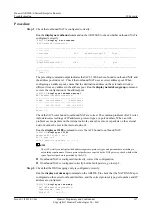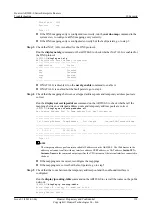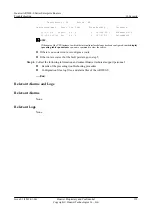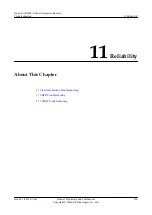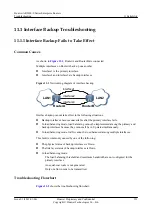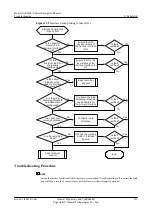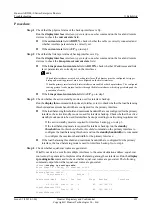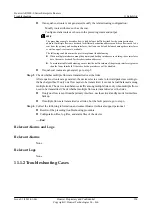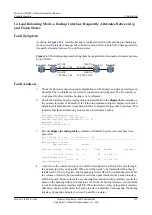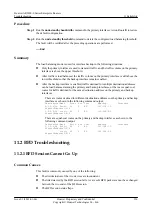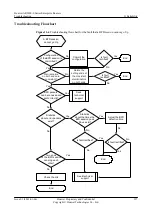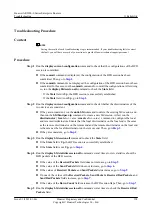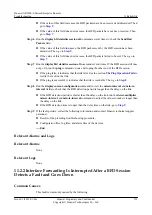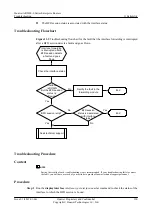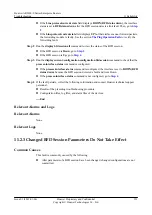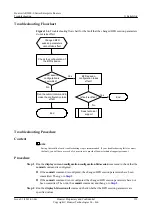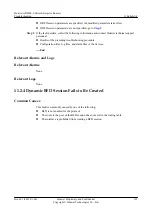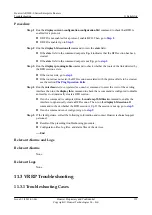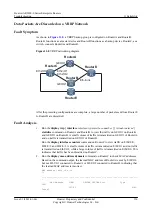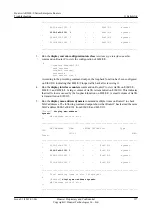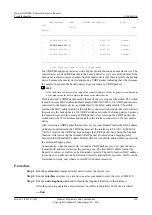
Procedure
Step 1
Check that the physical status of the backup interfaces is Up.
Run the
display interface
interface-type interface-number
command on the local and remote
devices to check the
current state
field.
l
If the
current state
field is
DOWN
, check whether the cable is correctly connected and
whether interface parameters are correctly set.
l
If the
current state
field is
UP
, go to step 2.
Step 2
Check that the link layer status of backup interfaces is Up.
Run the
display interface
interface-type interface-number
command on the local and remote
devices to check the
Line protocol current state
field.
l
If the
Line protocol current state
field is
DOWN
, check whether IP addresses and link
layer parameters are correctly set on the interfaces.
NOTE
When dialer interfaces are used as backup interfaces, IP addresses must be configured to trigger
dialup and a routing protocol must be configured on the dialer interfaces.
When the primary interface fails, dialer interfaces are enabled as backup interfaces. The configured
routing protocol sends protocol packets through the dialer interfaces, which triggers dialup and the
generation of routes.
l
If the
Line protocol current state
field is
UP
, go to step 3.
Step 3
Check whether the active/standby mode is used for interface backup.
Run the
display this
command in the primary interface view to check whether the load balancing
threshold and maximum bandwidth are configured for the primary interface.
l
If the load balancing threshold and maximum bandwidth are not configured for the primary
interface, the active/standby mode is used for interface backup. Check whether the active/
standby mode needs to be used for interface backup according to networking requirements:
–
If the active/standby mode is required for interface backup, go to step 6.
–
If the load balancing mode is required for interface backup, run the
standby
threshold
enable-threshold disable-threshold
command on the primary interface to
configure the load balancing threshold, and run the
standby bandwidth
size
command
to configure the maximum bandwidth for the primary interface.
l
If the load balancing threshold and maximum bandwidth are configured for the primary
interface, the load balancing mode is used for interface backup. Go to step 4.
Step 4
Check whether equal-cost routes are generated.
If traffic needs to be sent from multiple interfaces to the same destination address, equal-cost
routes must be generated to implement load balancing among these interfaces. Run the
display
ip routing-table
command to check whether equal-cost routes are generated. The following
command output shows that equal-cost routes are generated.
<Huawei>
display ip routing-table
Route Flags: R - relay, D - download to fib
----------------------------------------------------------------------------
Routing Tables: Public
Destinations : 7 Routes : 7
Destination/Mask Proto Pre Cost Flags NextHop Interface
2.2.2.0/24 Static 60 0 RD 192.168.1.2
GigabitEthernet1/0/0
Static 60 0 RD 192.168.2.2
GigabitEthernet2/0/0
Huawei AR2200-S Series Enterprise Routers
Troubleshooting
11 Reliability
Issue 01 (2012-01-06)
Huawei Proprietary and Confidential
Copyright © Huawei Technologies Co., Ltd.
323

